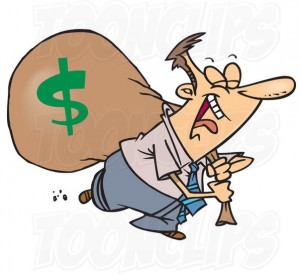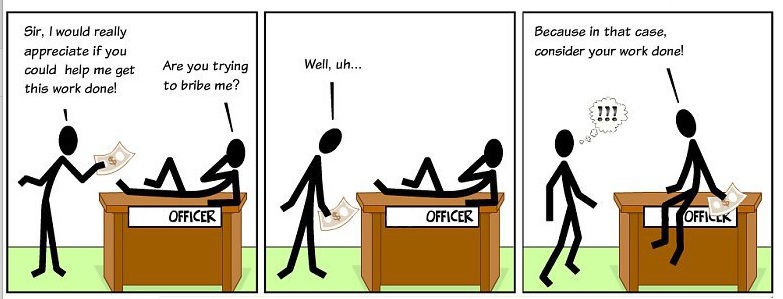Noah Smith’s Economics Books of the Year: Anyone’s list of best books of the year is going to be incomplete and biased. Mine, for example, is weighted toward books about economic theory and the financial industry. That means that 2015 is the perfect year for me to list my recommendations, since this was a particularly epic time for books about the discipline of economics. In no particular order, here is a short list of good ones:
“The Courage to Act: A Memoir of a Crisis and Its Aftermath” by Ben S. Bernanke. The story of the housing crash, the Lehman shock and the global financial crisis is by now common knowledge. What’s less known is how modern economic theory guided the thinking of the elites charged with halting the crisis. “Courage to Act” tells this story.
Ben Bernanke was the right man in the right place at the right time. He was by training an expert on the Great Depression who just happened to be chairman of the Federal Reserve during the onset of a new and similar crash. He was one of the only mainstream economic theorists who had thought deeply about the connections between finance and the macroeconomy. No person was more suited to the job than Bernanke. Very few would have had the “Courage to Act” as he did.
Bernanke is too modest to say this. It is only by reading his memoir that one gets a clear sense of his thoughtfulness, intellectual humility and powerful intelligence. This stands in strong contrast to the confused, ad-hoc decision-making apparatus of the Treasury Department, regulators, the large financial institutions and Congress. “Courage to Act” is a reminder of why an independent Fed, staffed with our most thoughtful and humble macroeconomists, is an important institution.
“Economics Rules: The Rights and Wrongs of the Dismal Science” by Dani Rodrik. As mainstream economists go, Dani Rodrik is a reformer. He is one of the only top scholars in the field to have questioned the hallowed pro-free-trade consensus, and to have explored the taboo idea of government industrial policy that targets industries and infrastructure to promote growth. So Rodrik is in a unique position to write a book about the economics profession and its discontents.
The central tenet of Rodrik’s book is that economic models are basically just fables. For any phenomenon — for example, the housing market — there are many alternative models. Each one represents a different way of thinking about this market — a different simple, imaginary world that hopefully sheds light on one thing that could be affecting housing. Economics, Rodrik asserts, is a craft, not a science — the key to being a good economist isn’t to find the right model, but to wisely pick from among the menu of available alternative models in each situation.
This vision of what economists do is familiar to anyone who has worked in the profession, but will be startling and — I predict — a little off-putting to outsiders who are used to getting more concrete results from science. In my opinion, it underrates the importance of the empirical revolution taking place in economics, which promises to help us choose between economic models not based on plausibility, but on evidence. “Economics Rules” is a must-read for critics and defenders of econ alike.
“Misbehaving: The Making of Behavioral Economics” by Richard Thaler. Richard Thaler is another rebel economist. In the 1970s and 1980s, the profession began discarding its long-cherished assumptions of perfectly rational consumers and producers, and toying with ideas from psychology. Thaler was one of the people at the forefront of this effort, and in “Misbehaving,” he narrates the history of the behavioral mini-revolution.
This story is engaging because it shows how scientific fields change direction. If you’ve ever read the philosopher of science Thomas Kuhn, you’re familiar with the idea that anomalies accumulate and slowly poke holes in the dominant theory until a crisis is reached. Thaler’s memoir recounts the process of anomalies piling up. It is fundamentally a story about how the economics discipline collectively realized that it was wrong about some things. It isn’t the story of how a new paradigm arose to replace the old one — in fact, that hasn’t happened yet. Eventually, we will get a more complete understanding of how economic agents make decisions, but these things take time.
“Chicagonomics: The Evolution of Chicago Free Market Economics” by Lanny Ebenstein
The so-called Chicago School of economics was the last great political-economic school of thought to emerge in the U.S. It blended libertarian political ideas with simple mathematical modeling, all organized around one central principle — that markets work. Many influential ideas and schools have emerged since the Chicago School, but all of them have been either limited in scope or have avoided mixing political ideology with assessment of the facts. Chicago was grandiose, sweeping and uncompromising. It attracted some of the nation’s brightest minds, and had a huge and lasting impact on our economic policies. In “Chicagonomics,” Lanny Ebenstein, a historian of economics, tells the tale of how this intellectual movement came together and found its destiny.
“Superforecasting: The Art and Science of Prediction” by Philip E. Tetlock and Dan Gardner. The books in the list so far have been all about theory — about how economists and policy makers hunt around in the dark for something that seems to make sense. But it’s nice to know that sometimes, social scientists can actually predict the future. Phil Tetlock and Dan Gardner have written an excellent book about the times that forecasting has worked. Drawing on lessons gleaned from observing individuals who have been remarkably successful at predicting political and economic events, Tetlock and Gardner offer their scholarly insight into how forecasting should best be done.






